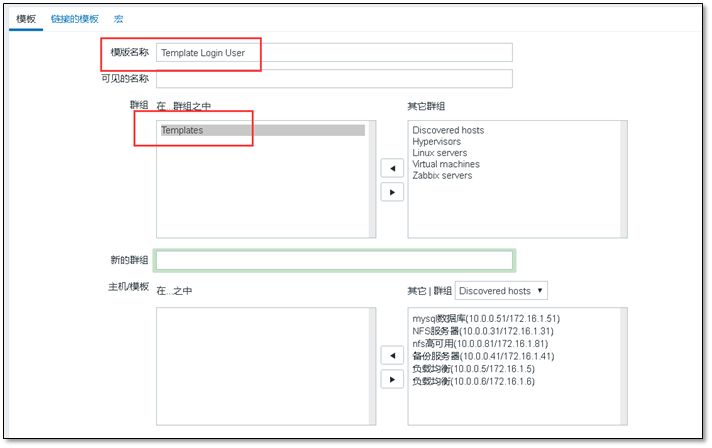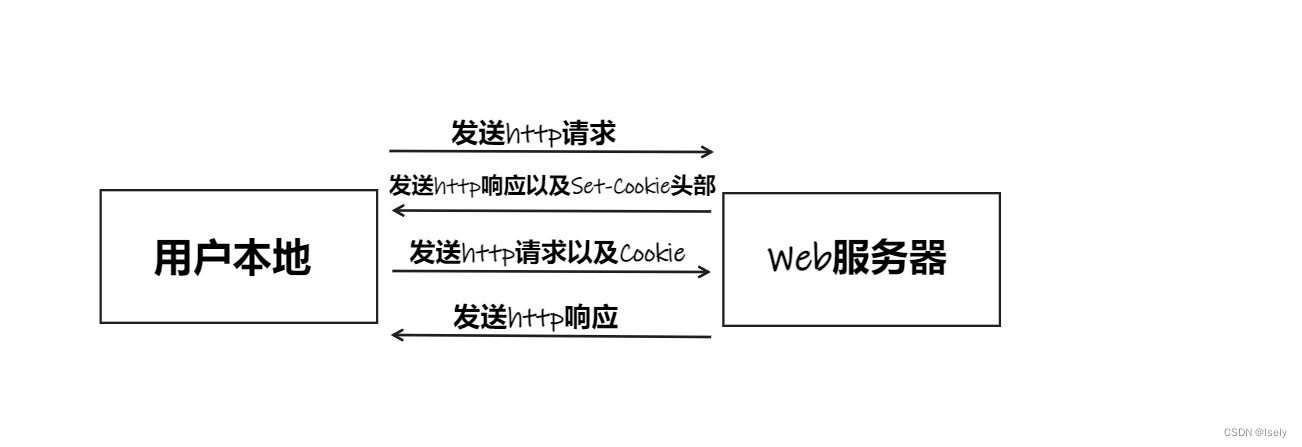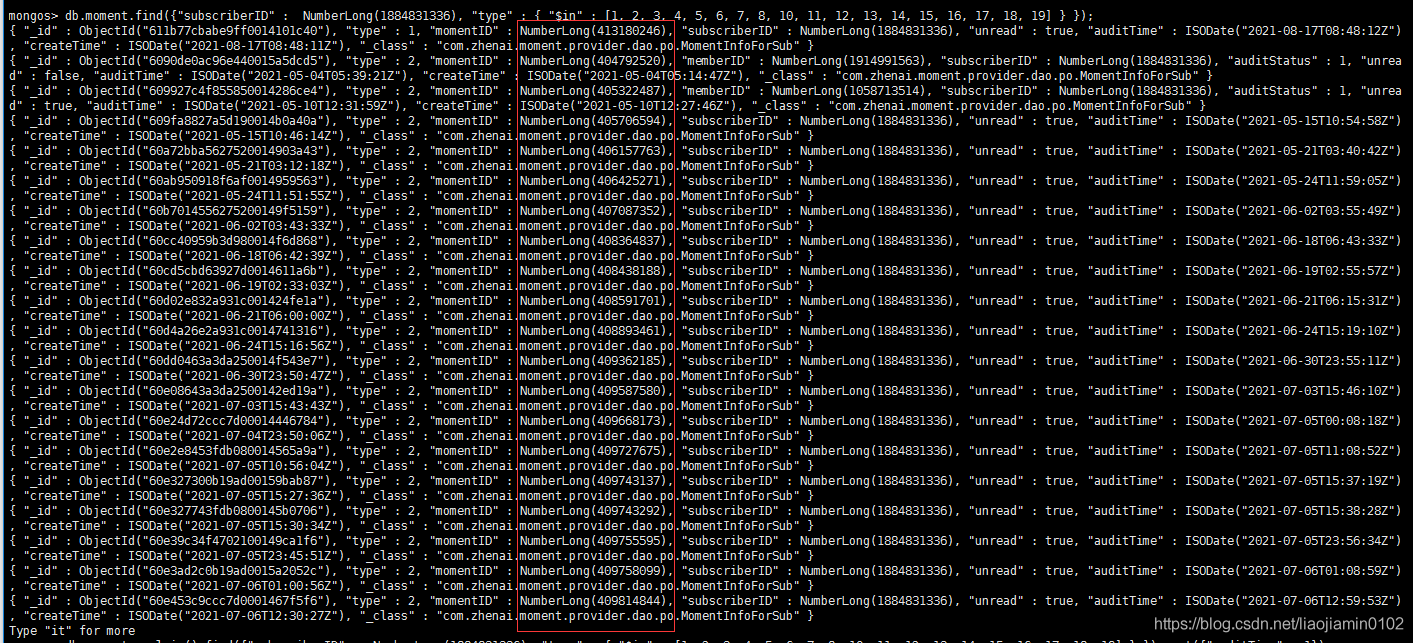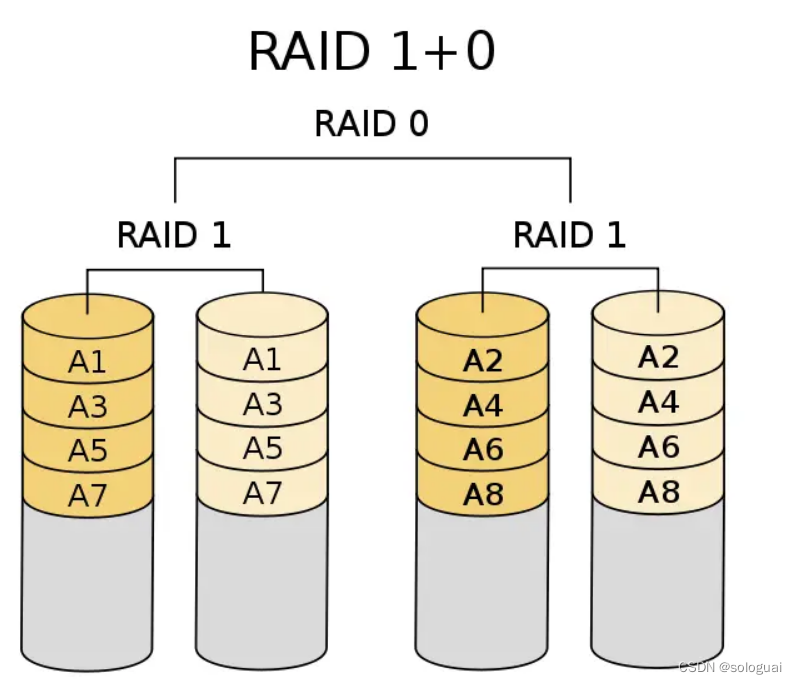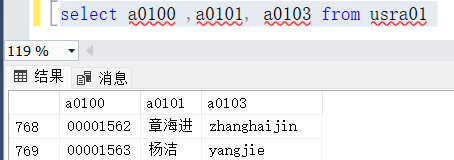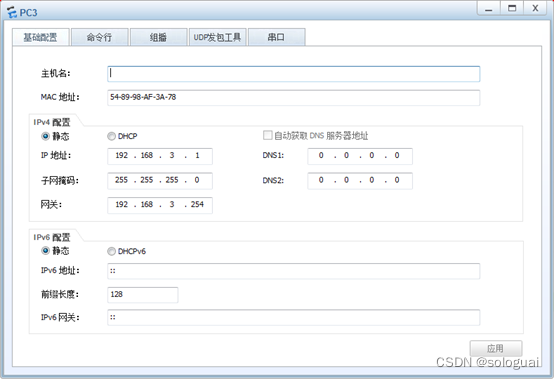当前位置:网站首页>Transformer详细解读与预测实例记录
Transformer详细解读与预测实例记录
2022-08-05 05:24:00 【monkeyhlj】
文章目录
Transformer详细解读与预测实例记录
1、位置编码
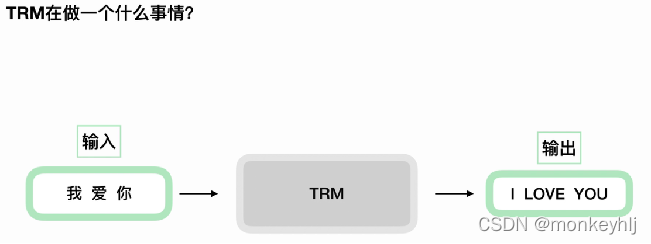
之后细化:
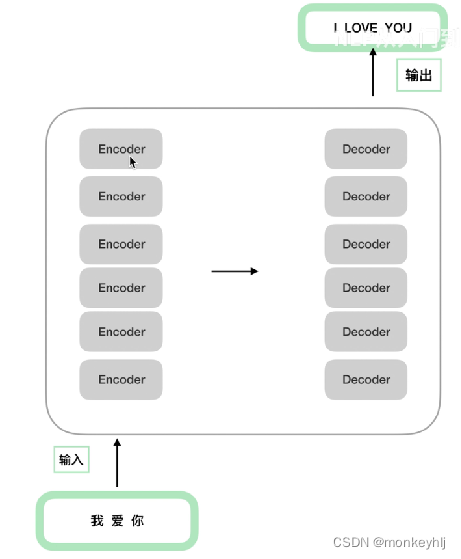
注意:encoder结构完全相同,但其参数不完全相同;decoder也是一样,不过decoder和encoder也是不相同的。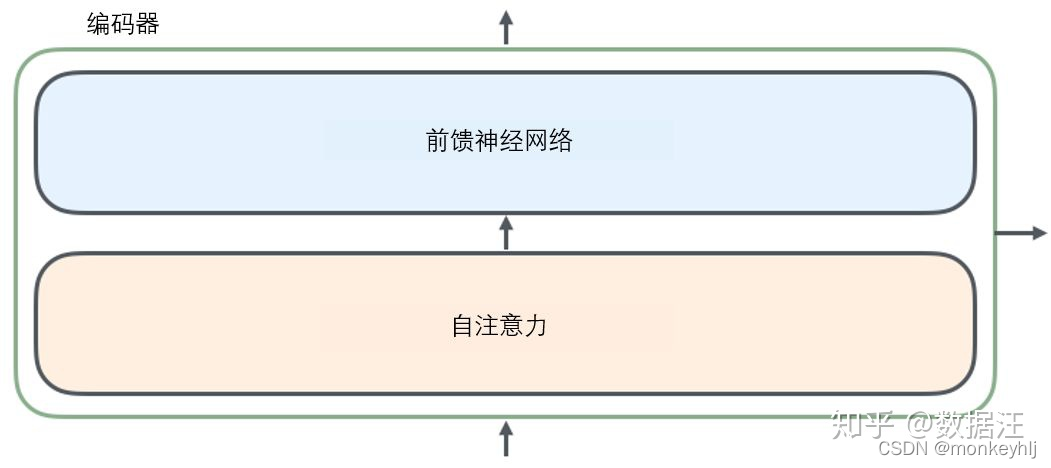
transformer模型结构如下图: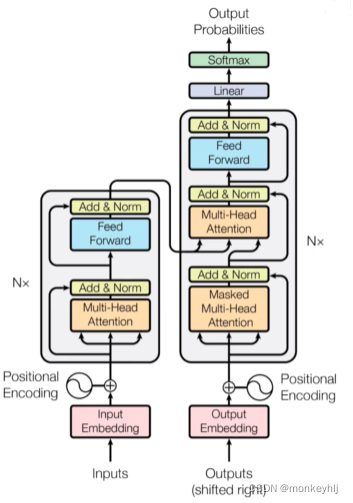
可以对应上图看。
接下来是encoder部分的详细说明: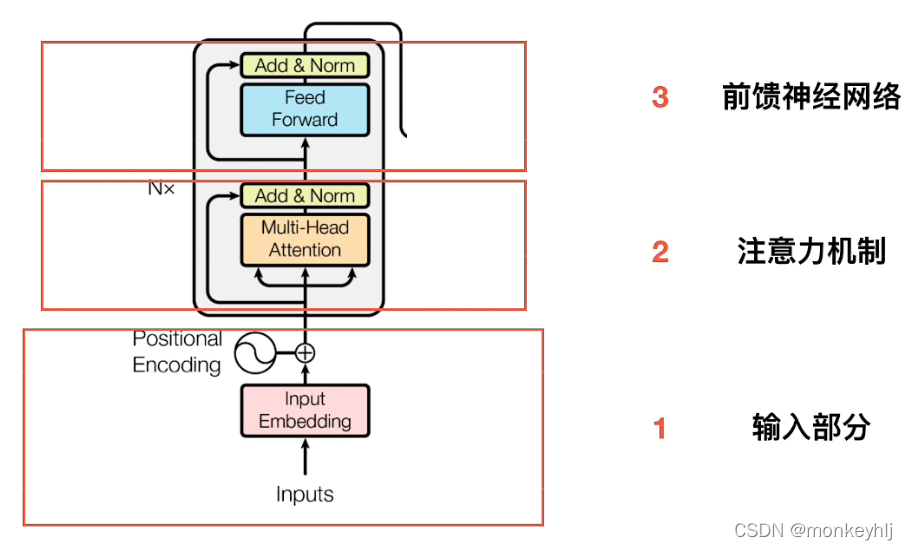
1)输入部分:
Embedding部分: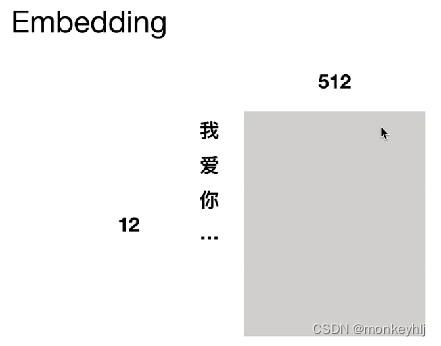
说明:这里的每一个字定义为一个512维度的字向量。
2)位置编码部分:
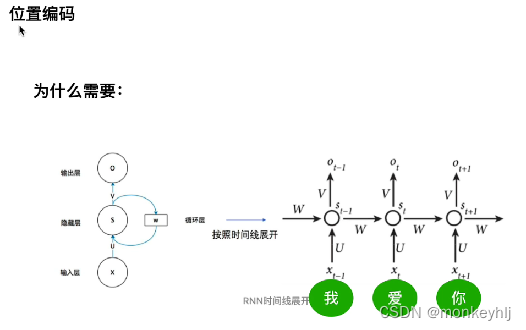
从RNN说起,RNN所有的timesteps都共享一套参数。
因为transformer所有的输入都是一起的,不会像RNN输入一个处理一个,所以其需要位置编码(我的理解就是确定位置关系)。
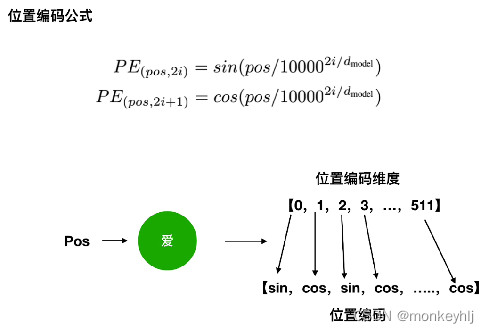
在偶数位置使用sin,在奇数位置使用cos。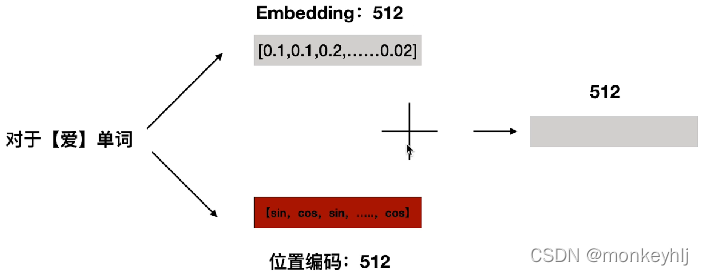
得到位置编码之后,把字向量的512维度向量与之相加,得到最终的512维度的向量作为transformer的输入向量。
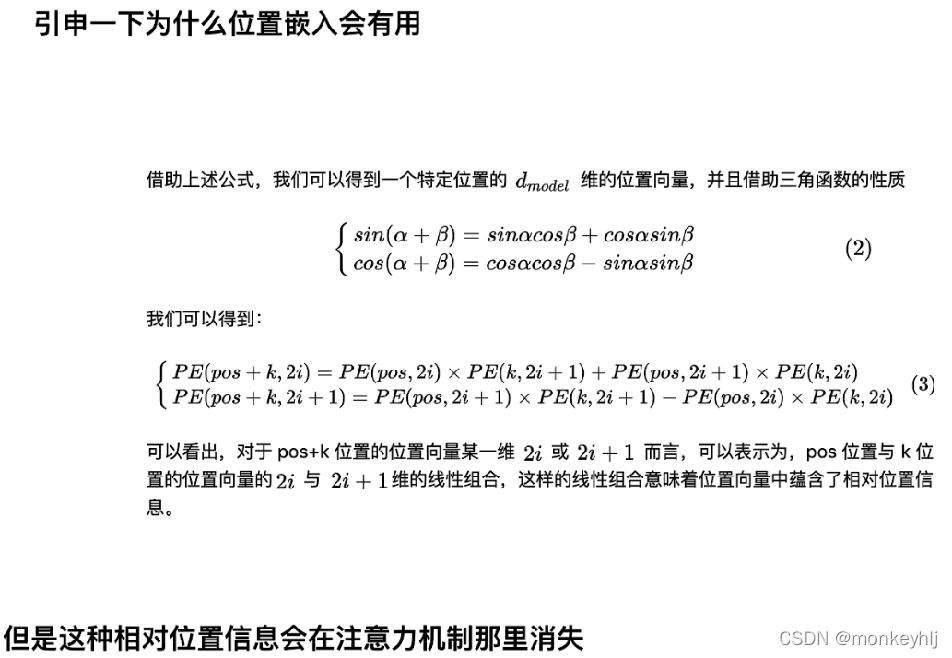
为什么会消失呢
可见文章:https://zhuanlan.zhihu.com/p/57732839/
2、多头注意力机制
1)基本注意力机制

这样我们会更加关注婴儿。
公式如下:
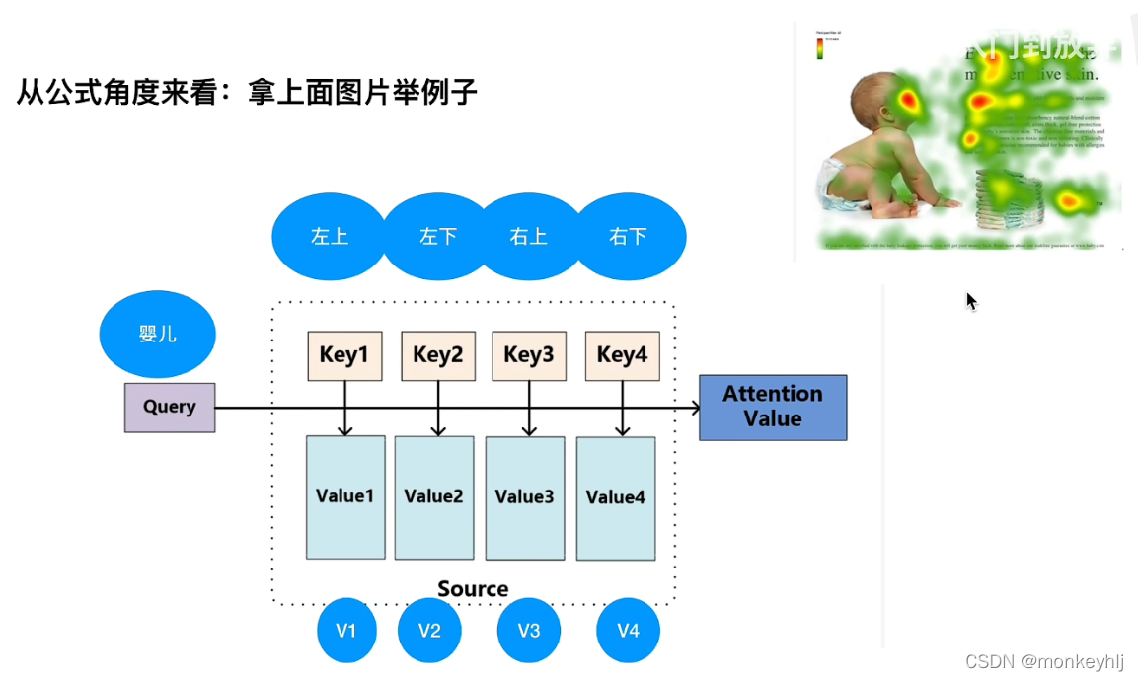

注:点乘结果越大,相似度越大。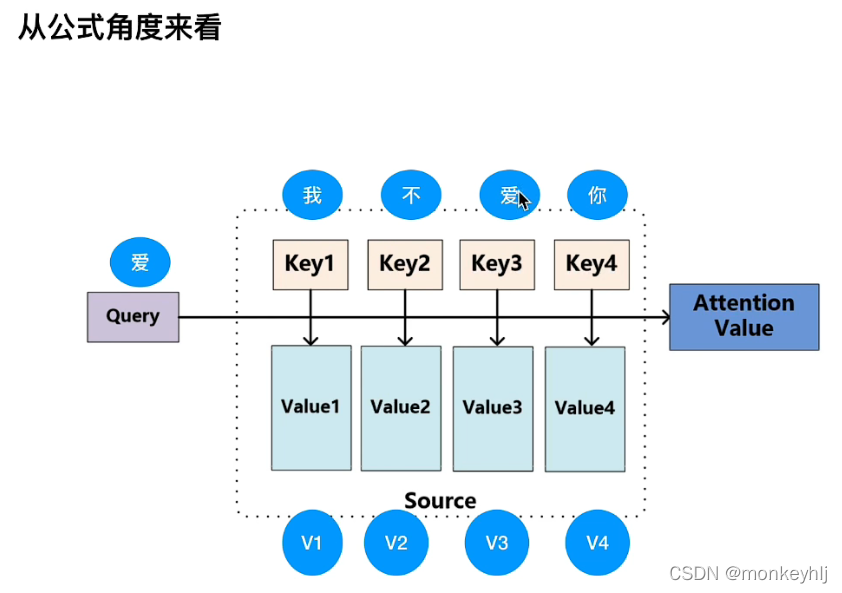
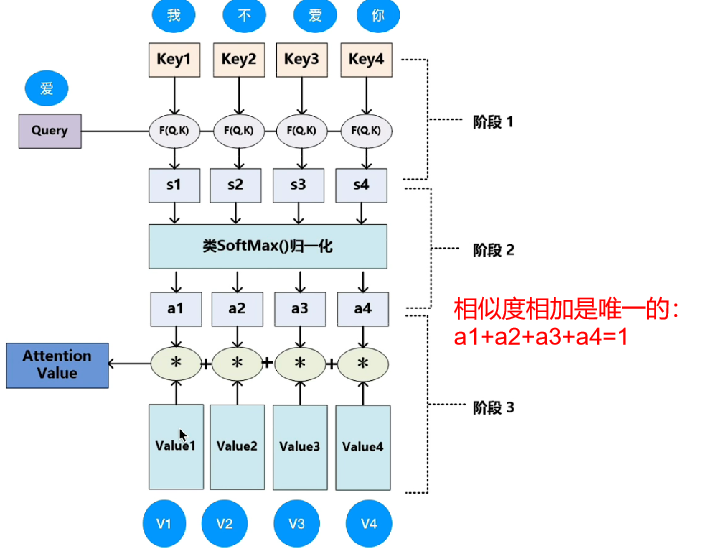
注意:上图中 a1+a2+a3+a4=1 ,因为相似度相加是唯一的。
2)transformer中的注意力
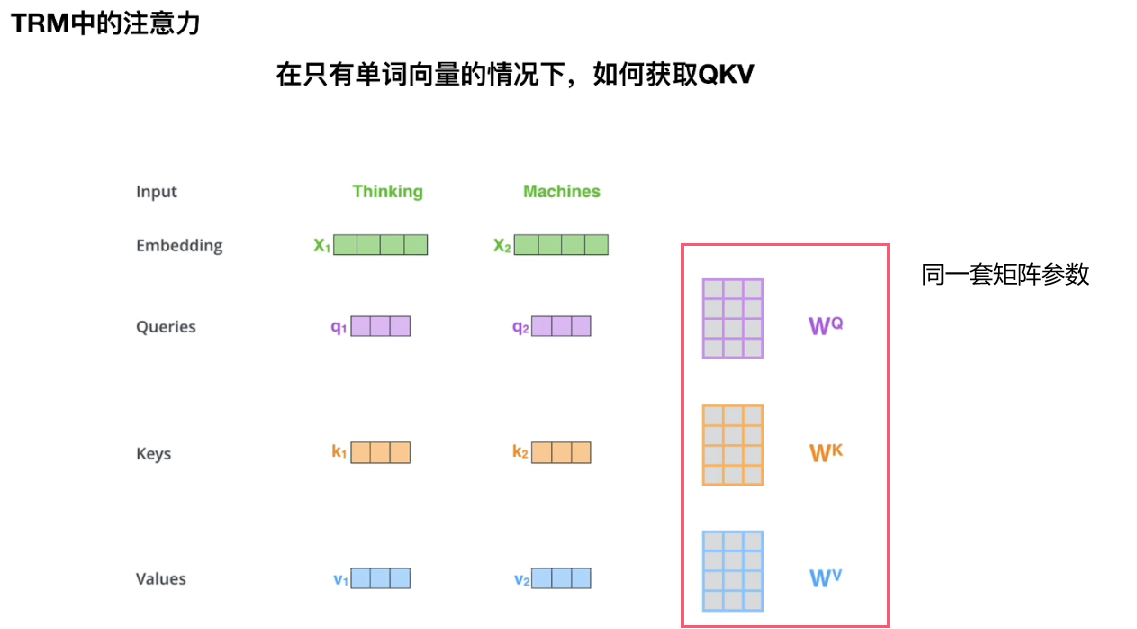
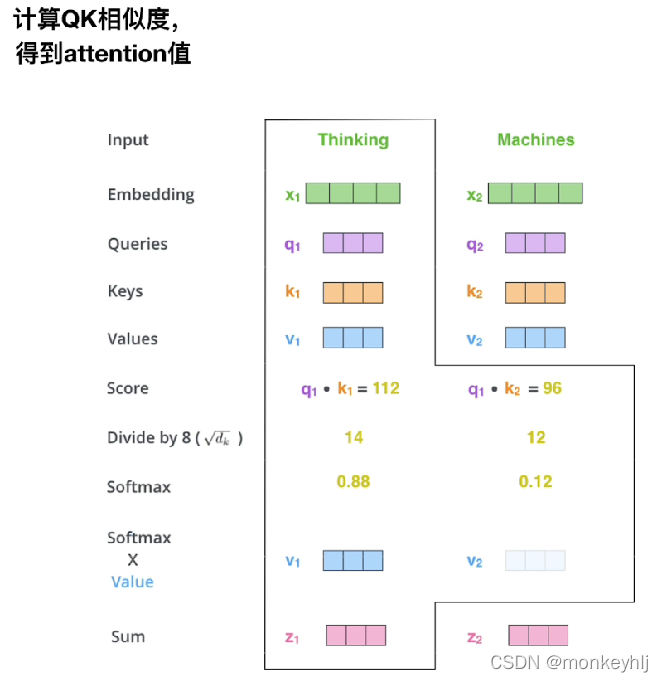
为什么除以根号dk,因为qk相乘值很大,经过softmax后容易造成梯度消失,为了保持方差控制为1。
第三步和第四步是将分数除以8(8是论文中使用的键向量的维数64的平方根,这会让梯度更稳定。这里也可以使用其它值,8只是默认值),然后通过softmax传递结果。softmax的作用是使所有单词的分数归一化,得到的分数都是正值且和为1。
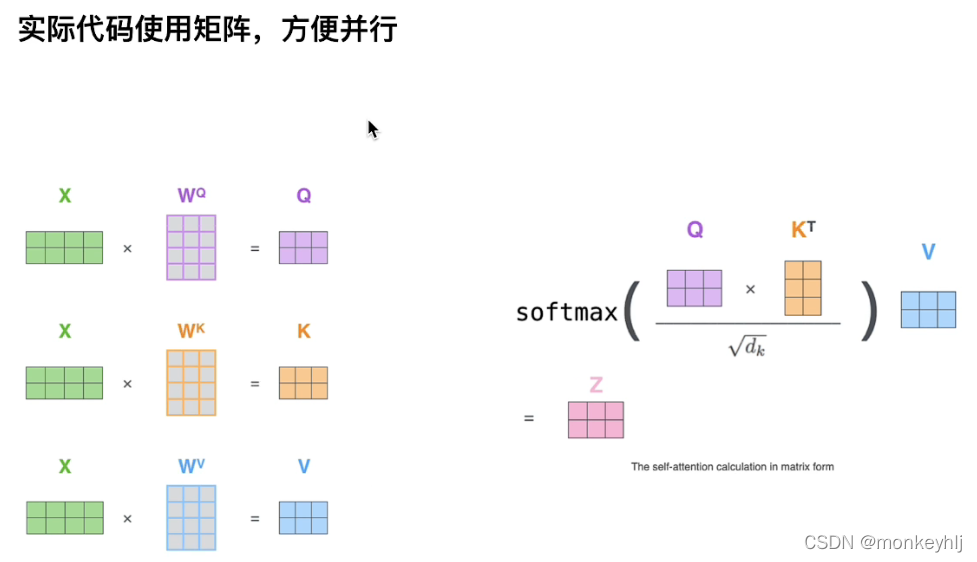
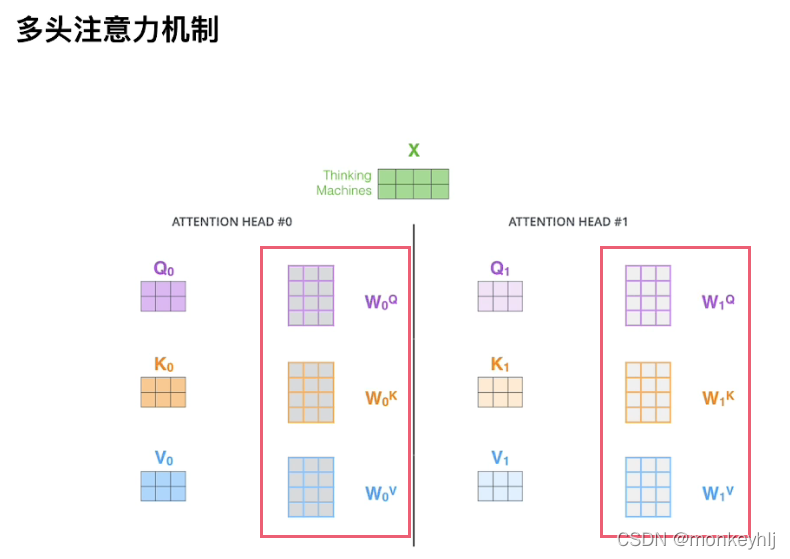
就是多了几套参数QKV,相当于把原始数据划分成了不同的空间。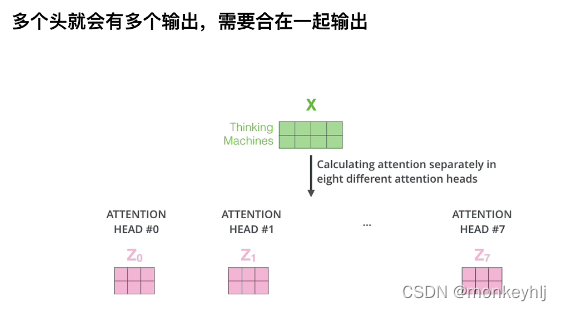
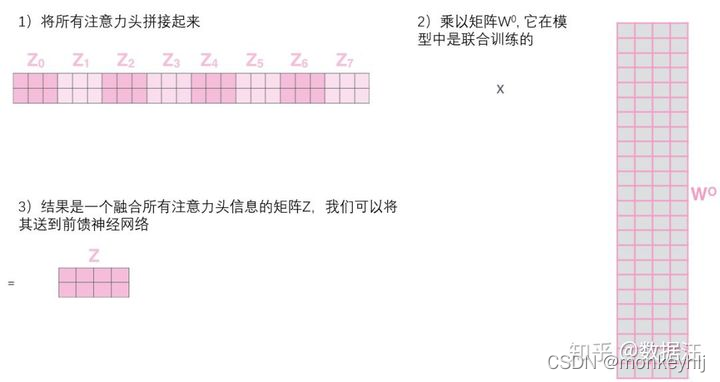
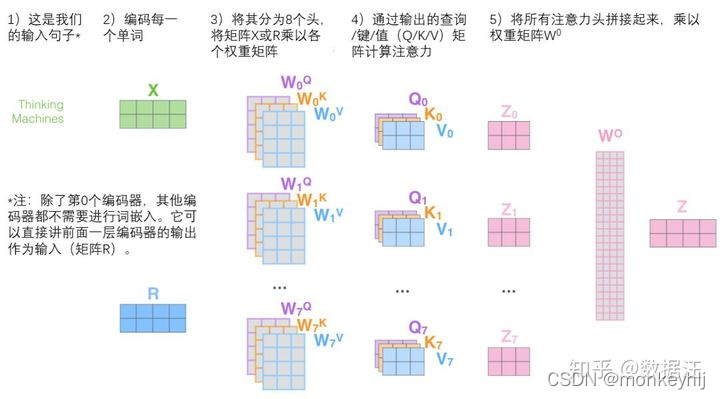
整体如下图: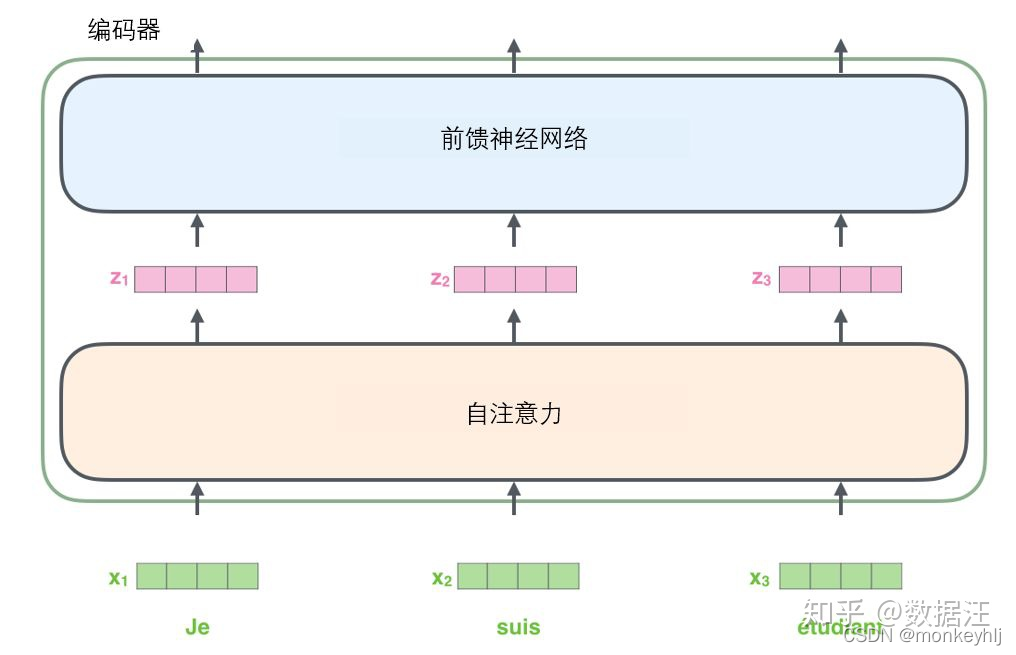
3、残差和LayerNorm
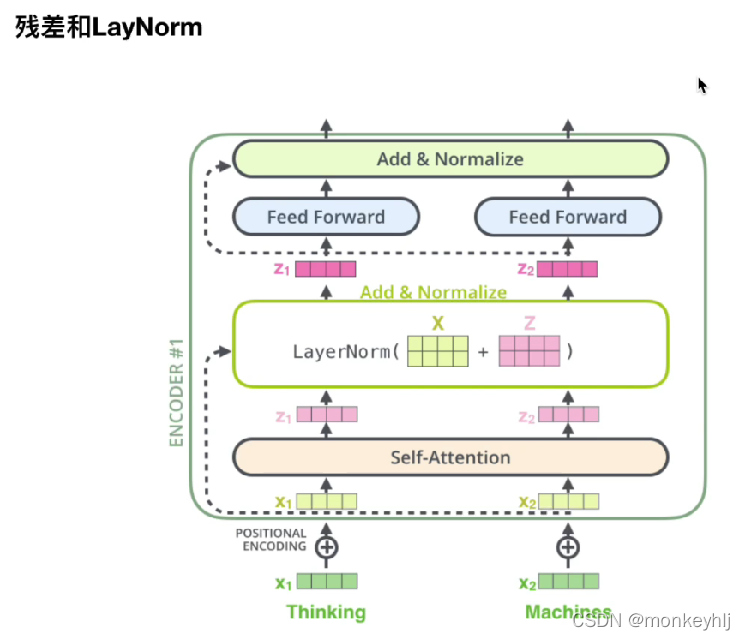
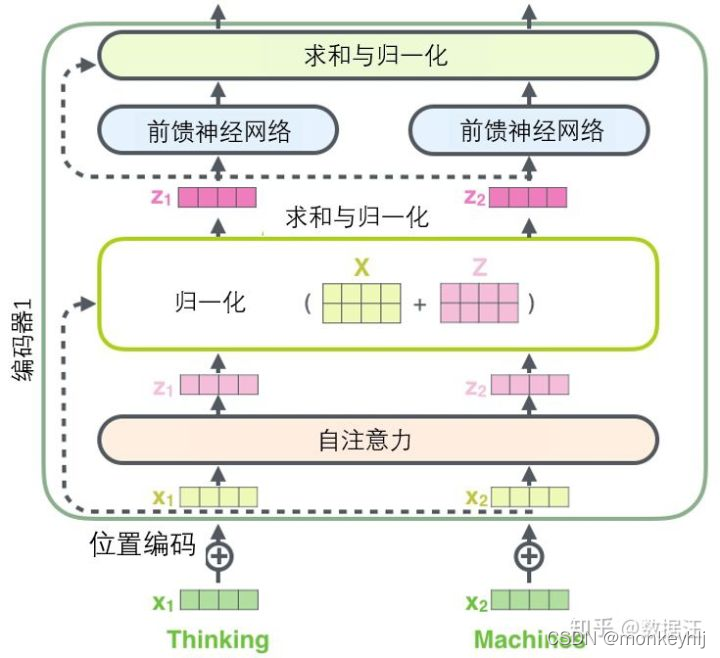
1)残差
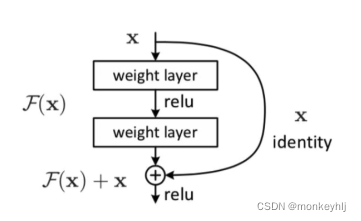
残差就相当于是把原始的输入X与经过F(X)后的结果再相加。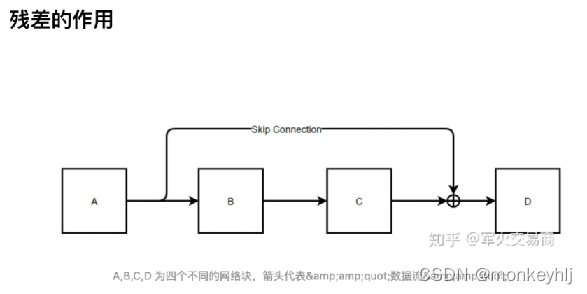
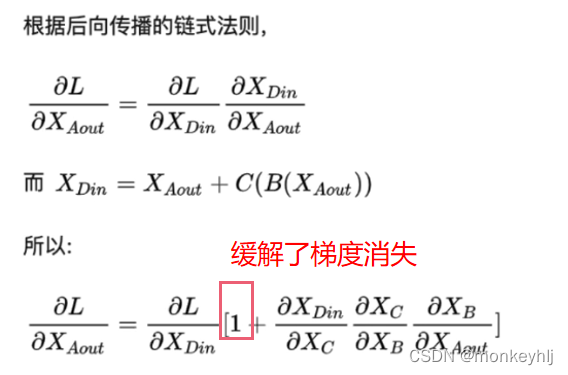
所以它网络的深度可以很深,因为缓解了梯度消失。
2)LayerNorm

(BatchNormalization)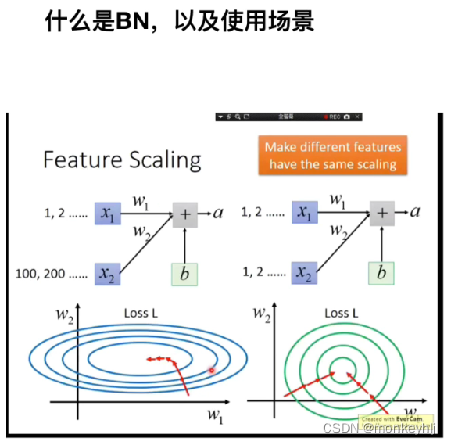
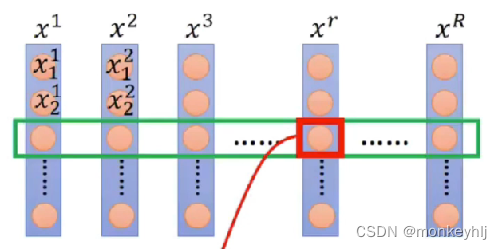

** BN缺点:**
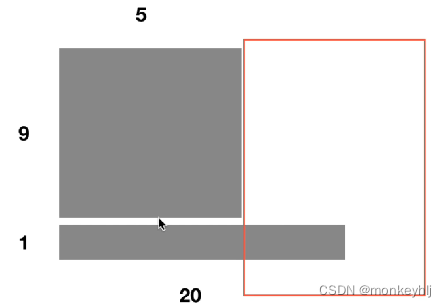
当batch_size为10,9个长度为5,1个长度为20的时候,前5个单词的均值和方差可以用10个样本算出来,但是第10个样本的第6个单词到第20个样本前9个里面没有,只有一个所以bach_size很小的时候效果很差。
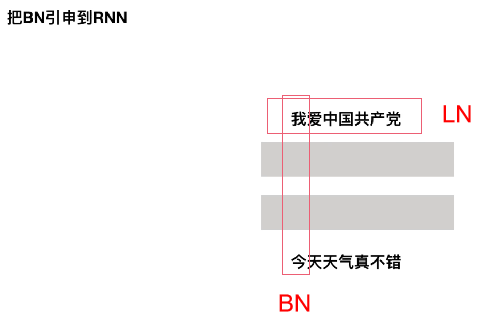
4、前馈神经网络
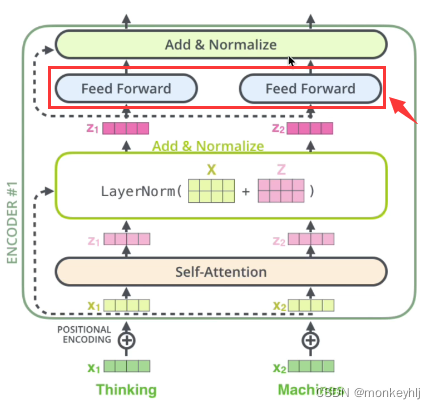
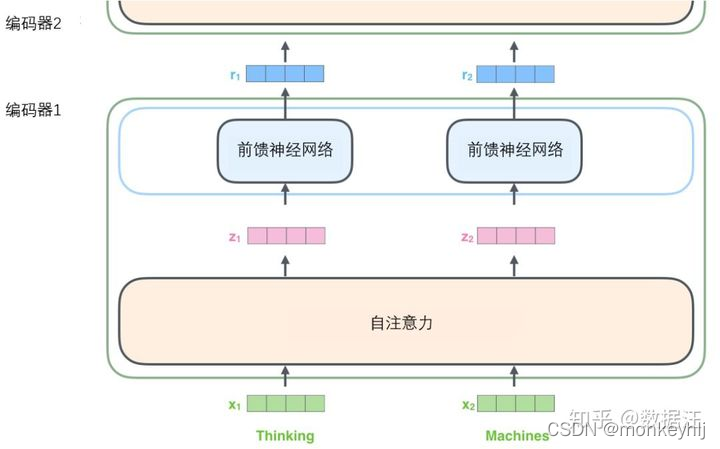
输入序列的每个单词都经过自编码过程。然后,他们各自通过前向传播神经网络——完全相同的网络,而每个向量都分别通过它。
5、Decoder
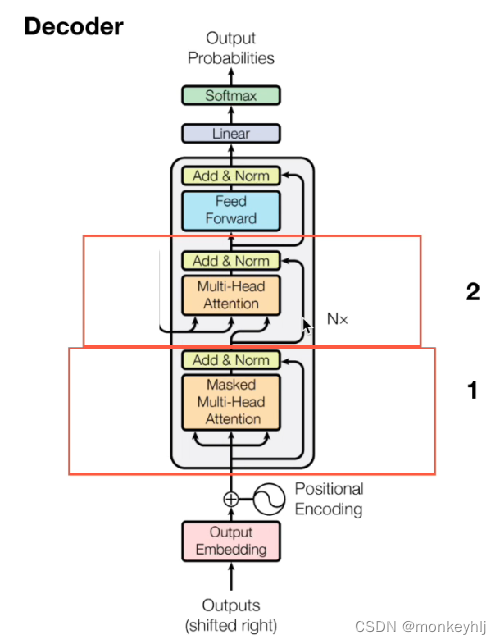
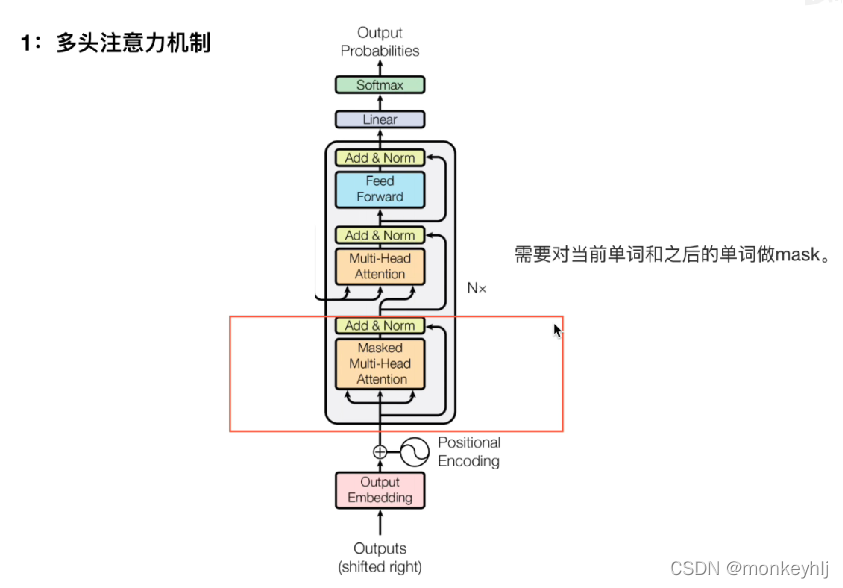
为什么需要mask?
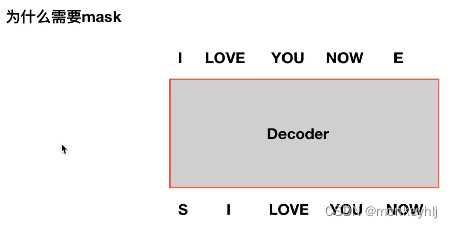
如果没有mask: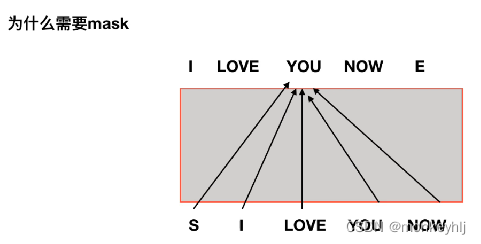
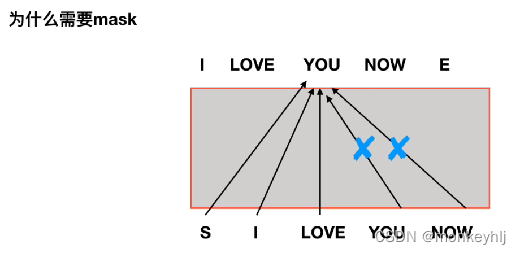
2 encoder和decoder怎么交互的呢?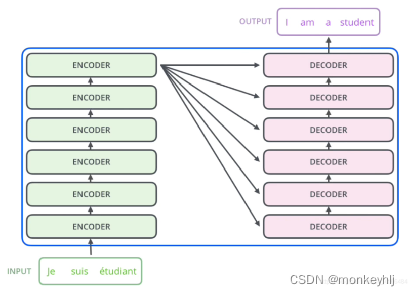
编码器通过处理输入序列开启工作。顶端编码器的输出之后会变转化为一个包含向量K(键向量)和V(值向量)的注意力向量集 。这些向量将被每个解码器用于自身的“编码-解码注意力层”,而这些层可以帮助解码器关注输入序列哪些位置合适: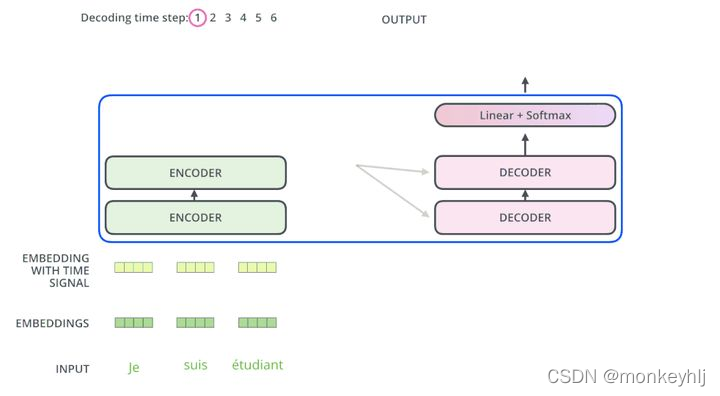
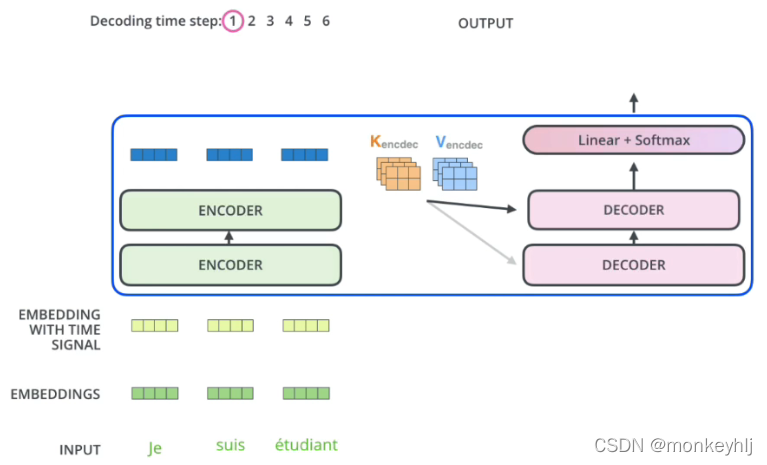
在完成编码阶段后,则开始解码阶段。解码阶段的每个步骤都会输出一个输出序列(在这个例子里,是英语翻译的句子)的元素。
接下来的步骤重复了这个过程,直到到达一个特殊的终止符号,它表示transformer的解码器已经完成了它的输出。每个步骤的输出在下一个时间步被提供给底端解码器,并且就像编码器之前做的那样,这些解码器会输出它们的解码结果 。另外,就像我们对编码器的输入所做的那样,我们会嵌入并添加位置编码给那些解码器,来表示每个单词的位置。
而那些解码器中的自注意力层表现的模式与编码器不同:在解码器中,自注意力层只被允许处理输出序列中更靠前的那些位置。在softmax步骤前,它会把后面的位置给隐去(把它们设为-inf)。
这个“编码-解码注意力层”工作方式基本就像多头自注意力层一样,只不过它是通过在它下面的层来创造查询矩阵,并且从编码器的输出中取得键/值矩阵。
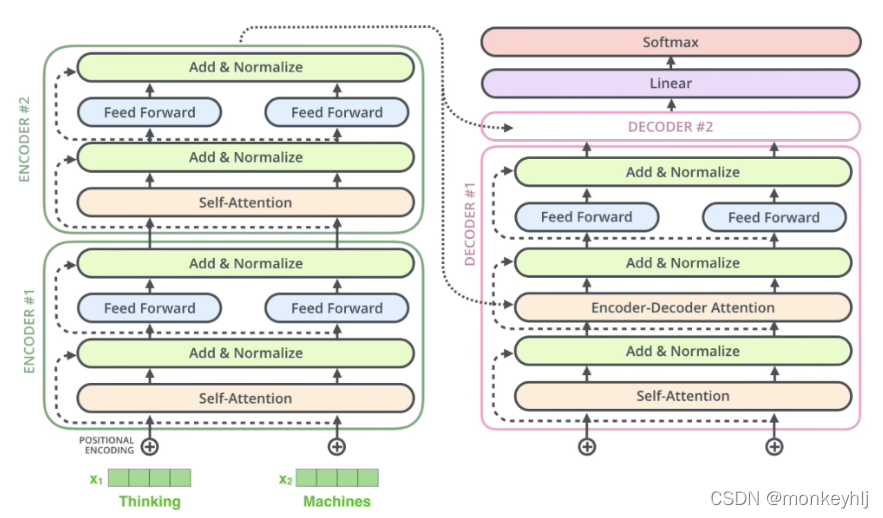
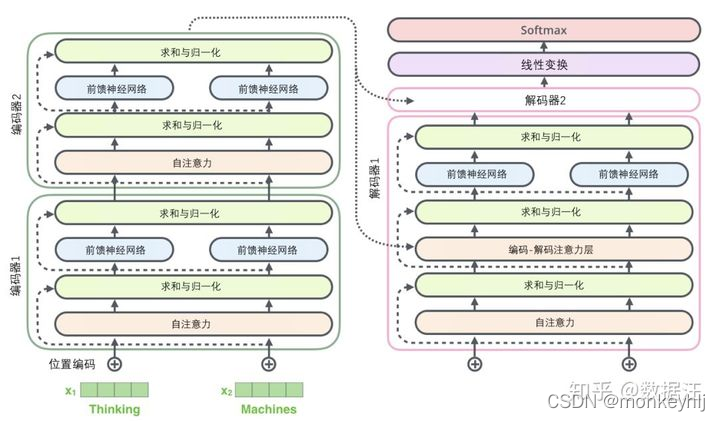
最终的线性变换和Softmax层:
解码组件最后会输出一个实数向量。我们如何把浮点数变成一个单词?这便是线性变换层要做的工作,它之后就是Softmax层。
线性变换层是一个简单的全连接神经网络,它可以把解码组件产生的向量投射到一个比它大得多的、被称作对数几率(logits)的向量里。
不妨假设我们的模型从训练集中学习一万个不同的英语单词(我们模型的“输出词表”)。因此对数几率向量为一万个单元格长度的向量——每个单元格对应某一个单词的分数。
接下来的Softmax 层便会把那些分数变成概率(都为正数、上限1.0)。概率最高的单元格被选中,并且它对应的单词被作为这个时间步的输出。
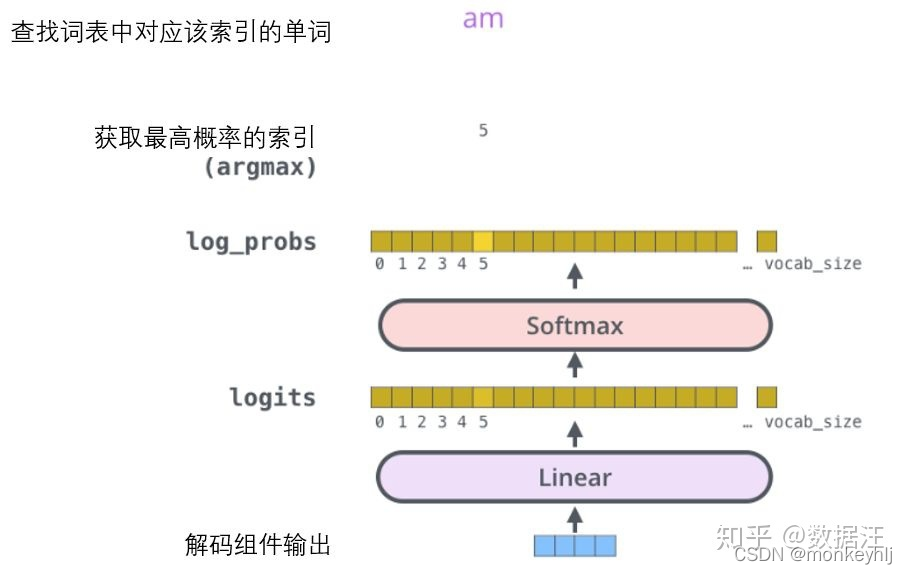
这张图片从底部以解码器组件产生的输出向量开始。之后它会转化出一个输出单词。
6、实例记录
时序数据单步预测
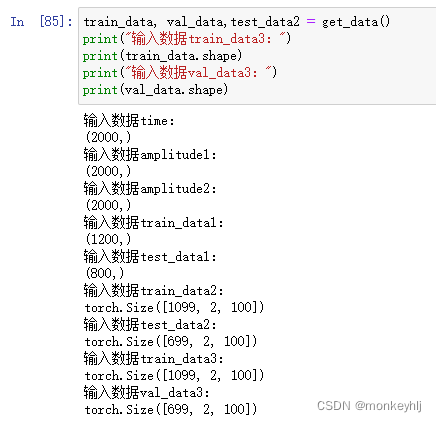

import torch
import torch.nn as nn
import numpy as np
import time
import math
from matplotlib import pyplot
torch.manual_seed(0)
np.random.seed(0)
import warnings
warnings.filterwarnings('ignore')
class PositionalEncoding(nn.Module):
def __init__(self, d_model, max_len=5000):
super(PositionalEncoding, self).__init__()
pe = torch.zeros(max_len, d_model)
position = torch.arange(0, max_len, dtype=torch.float).unsqueeze(1)
div_term = torch.exp(torch.arange(0, d_model, 2).float() * (-math.log(10000.0) / d_model))
pe[:, 0::2] = torch.sin(position * div_term)
pe[:, 1::2] = torch.cos(position * div_term)
pe = pe.unsqueeze(0).transpose(0, 1)
#pe.requires_grad = False
self.register_buffer('pe', pe)
def forward(self, x):
return x + self.pe[:x.size(0), :]
class TransAm(nn.Module):
def __init__(self,feature_size=250,num_layers=1,dropout=0.1):
super(TransAm, self).__init__()
self.model_type = 'Transformer'
self.src_mask = None
self.pos_encoder = PositionalEncoding(feature_size)
self.encoder_layer = nn.TransformerEncoderLayer(d_model=feature_size, nhead=10, dropout=dropout)
self.transformer_encoder = nn.TransformerEncoder(self.encoder_layer, num_layers=num_layers)
self.decoder = nn.Linear(feature_size,1)
self.init_weights()
def init_weights(self):
initrange = 0.1
self.decoder.bias.data.zero_()
self.decoder.weight.data.uniform_(-initrange, initrange)
def forward(self,src):
if self.src_mask is None or self.src_mask.size(0) != len(src):
device = src.device
mask = self._generate_square_subsequent_mask(len(src)).to(device)
self.src_mask = mask
src = self.pos_encoder(src)
output = self.transformer_encoder(src,self.src_mask)#, self.src_mask)
output = self.decoder(output)
return output
def _generate_square_subsequent_mask(self, sz):
mask = (torch.triu(torch.ones(sz, sz)) == 1).transpose(0, 1)
mask = mask.float().masked_fill(mask == 0, float('-inf')).masked_fill(mask == 1, float(0.0))
return mask
def get_batch(source, i,batch_size):
seq_len = min(batch_size, len(source) - 1 - i)
data = source[i:i+seq_len]
input = torch.stack(torch.stack([item[0] for item in data]).chunk(input_window,1)) # 1 is feature size
target = torch.stack(torch.stack([item[1] for item in data]).chunk(input_window,1))
return input, target
def train(train_data):
model.train() # Turn on the train mode \o/
total_loss = 0.
start_time = time.time()
for batch, i in enumerate(range(0, len(train_data) - 1, batch_size)):
data, targets = get_batch(train_data, i,batch_size)
optimizer.zero_grad()
output = model(data)
loss = criterion(output, targets)
loss.backward()
torch.nn.utils.clip_grad_norm_(model.parameters(), 0.7)
optimizer.step()
total_loss += loss.item()
log_interval = int(len(train_data) / batch_size / 5)
if batch % log_interval == 0 and batch > 0:
cur_loss = total_loss / log_interval
elapsed = time.time() - start_time
print('| epoch {:3d} | {:5d}/{:5d} batches | '
'lr {:02.6f} | {:5.2f} ms | '
'loss {:5.5f} | ppl {:8.2f}'.format(
epoch, batch, len(train_data) // batch_size, scheduler.get_lr()[0],
elapsed * 1000 / log_interval,
cur_loss, math.exp(cur_loss)))
total_loss = 0
start_time = time.time()
def plot_and_loss(eval_model, data_source,epoch):
eval_model.eval()
total_loss = 0.
test_result = torch.Tensor(0)
truth = torch.Tensor(0)
with torch.no_grad():
for i in range(0, len(data_source) - 1):
data, target = get_batch(data_source, i,1)
output = eval_model(data)
total_loss += criterion(output, target).item()
test_result = torch.cat((test_result, output[-1].view(-1).cpu()), 0)
truth = torch.cat((truth, target[-1].view(-1).cpu()), 0)
#test_result = test_result.cpu().numpy() -> no need to detach stuff..
len(test_result)
pyplot.plot(test_result,color="red")
pyplot.plot(truth[:500],color="blue")
pyplot.plot(test_result-truth,color="green")
pyplot.grid(True, which='both')
pyplot.axhline(y=0, color='k')
pyplot.savefig('graph/transformer-epoch%d.png'%epoch)
pyplot.close()
return total_loss / i
# predict the next n steps based on the input data
def predict_future(eval_model, data_source,steps):
eval_model.eval()
total_loss = 0.
test_result = torch.Tensor(0)
truth = torch.Tensor(0)
data, _ = get_batch(data_source, 0,1)
with torch.no_grad():
for i in range(0, steps):
output = eval_model(data[-input_window:])
data = torch.cat((data, output[-1:]))
data = data.cpu().view(-1)
# I used this plot to visualize if the model pics up any long therm struccture within the data.
pyplot.plot(data,color="red")
pyplot.plot(data[:input_window],color="blue")
pyplot.grid(True, which='both')
pyplot.axhline(y=0, color='k')
pyplot.savefig('graph/transformer-future%d.png'%steps)
pyplot.close()
def evaluate(eval_model, data_source):
eval_model.eval() # Turn on the evaluation mode
total_loss = 0.
eval_batch_size = 1000
with torch.no_grad():
for i in range(0, len(data_source) - 1, eval_batch_size):
data, targets = get_batch(data_source, i,eval_batch_size)
output = eval_model(data)
total_loss += len(data[0])* criterion(output, targets).cpu().item()
return total_loss / len(data_source)
input_window = 100 # number of input steps
output_window = 1 # number of prediction steps, in this model its fixed to one
batch_size = 10
device = torch.device("cuda" if torch.cuda.is_available() else "cpu")
# if window is 100 and prediction step is 1
# in -> [0..99]
# target -> [1..100]
def create_inout_sequences(input_data, tw):
inout_seq = []
L = len(input_data)
for i in range(L-tw):
train_seq = input_data[i:i+tw]
train_label = input_data[i+output_window:i+tw+output_window]
inout_seq.append((train_seq ,train_label))
return torch.FloatTensor(inout_seq)
def get_data():
# construct a littel toy dataset
time = np.arange(0, 200, 0.1)
print("输入数据time:")
print(time.shape)
amplitude = np.sin(time) + np.sin(time*0.05) +np.sin(time*0.12) *np.random.normal(-0.2, 0.2, len(time))
print("输入数据amplitude1:")
print(amplitude.shape)
#loading weather data from a file
#from pandas import read_csv
#series = read_csv('daily-min-temperatures.csv', header=0, index_col=0, parse_dates=True, squeeze=True)
# looks like normalizing input values curtial for the model
from sklearn.preprocessing import MinMaxScaler
scaler = MinMaxScaler(feature_range=(-1, 1))
#amplitude = scaler.fit_transform(series.to_numpy().reshape(-1, 1)).reshape(-1)
amplitude = scaler.fit_transform(amplitude.reshape(-1, 1)).reshape(-1)
print("输入数据amplitude2:")
print(amplitude.shape)
# sampels = 2600
sampels = 1200
train_data = amplitude[:sampels]
test_data = amplitude[sampels:]
test_data2 = amplitude[sampels:]
print("输入数据train_data1:")
print(train_data.shape)
print("输入数据test_data1:")
print(test_data.shape)
# convert our train data into a pytorch train tensor
#train_tensor = torch.FloatTensor(train_data).view(-1)
# todo: add comment..
train_sequence = create_inout_sequences(train_data,input_window)
train_sequence = train_sequence[:-output_window] #todo: fix hack? -> din't think this through, looks like the last n sequences are to short, so I just remove them. Hackety Hack..
#test_data = torch.FloatTensor(test_data).view(-1)
test_data = create_inout_sequences(test_data,input_window)
test_data = test_data[:-output_window] #todo: fix hack?
print("输入数据train_sequence:")
print(train_sequence.shape)
print("输入数据test_data2:")
print(test_data.shape)
return train_sequence.to(device),test_data.to(device),test_data2
model = TransAm().to(device)
criterion = nn.MSELoss()
lr = 0.005
#optimizer = torch.optim.SGD(model.parameters(), lr=lr)
optimizer = torch.optim.AdamW(model.parameters(), lr=lr)
scheduler = torch.optim.lr_scheduler.StepLR(optimizer, 1.0, gamma=0.95)
best_val_loss = float("inf")
epochs = 30 # The number of epochs
best_model = None
for epoch in range(1, epochs + 1):
epoch_start_time = time.time()
train(train_data)
if(epoch % 10 is 0):
val_loss = plot_and_loss(model, val_data,epoch)
predict_future(model, val_data,200)
else:
val_loss = evaluate(model, val_data)
print('-' * 89)
print('| end of epoch {:3d} | time: {:5.2f}s | valid loss {:5.5f} | valid ppl {:8.2f}'.format(epoch, (time.time() - epoch_start_time),
val_loss, math.exp(val_loss)))
print('-' * 89)
# if val_loss < best_val_loss:
# best_val_loss = val_loss
# best_model = model
scheduler.step()
结果如下图:
蓝色是真实数据,红色是预测数据,绿色是差值。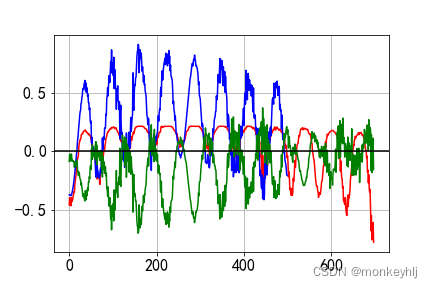
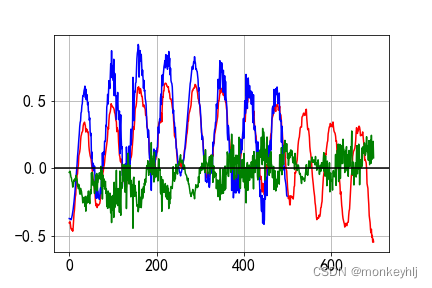
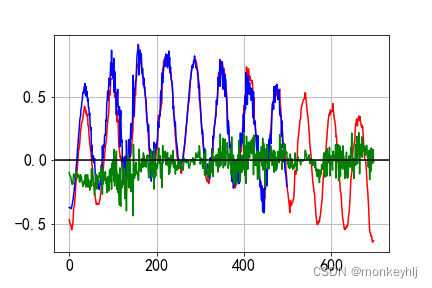
预测未来结果: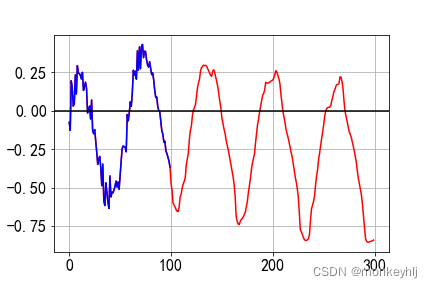
时序数据多步预测
input_window = 100
output_window = 5
batch_size = 10 # batch size
device = torch.device("cuda" if torch.cuda.is_available() else "cpu")
calculate_loss_over_all_values = False
修改output_window即可。
注:以上为个人学习笔记,仅供学习参考,转载需授权,非商业转载请注明出处,如有错误或补充欢迎指出!
【参考】https://www.bilibili.com/video/BV1Di4y1c7Zm?p=3&spm_id_from=pageDriver
【参考】https://zhuanlan.zhihu.com/p/54356280
【参考】https://zhuanlan.zhihu.com/p/57732839/
【参考】https://blog.csdn.net/m0_60413136/article/details/120297473
边栏推荐
- 正则表达式小实例--验证邮箱地址
- [问题已处理]-虚拟机报错contains a file system with errors check forced
- Take you in-depth understanding of cookies
- 运维工程师,快来薅羊毛
- The hook of the operation of the selenium module
- 逻辑卷创建
- markdown editor template
- Autoware--Beike Tianhui rfans lidar uses the camera & lidar joint calibration file to verify the fusion effect of point cloud images
- 7 steps to complete cloud monitoring
- 运维的高光时刻,从智能化开始
猜你喜欢
随机推荐
IP packet format (ICMP protocol and ARP protocol)
技术分享杂七杂八技术
markdown编辑器模板
[问题已处理]-jenkins流水线checkout超时
Next-Generation Parsing Technology - Cloud Parsing
Mina's long and short connections
Technology Sharing Miscellaneous Technologies
LeetCode Interview Questions
One-arm routing experiment and three-layer switch experiment
Wireshark packet capture and common filtering methods
网络不通?服务丢包?看这篇就够了
Billions of IT operations in the market, the product by strength to speak
The idea of commonly used shortcut key
Dry!Teach you to use industrial raspberries pie combining CODESYS configuration EtherCAT master station
原生JS带你了解数组方法实现及使用
深度 Zabbix 使用指南——来自惨绿少年
spark operator-parallelize operator
解决这三大问题,运维效率将超90%的医院
The method of using ROS1 bag under ROS2
正则表达式小实例--验证邮箱地址
